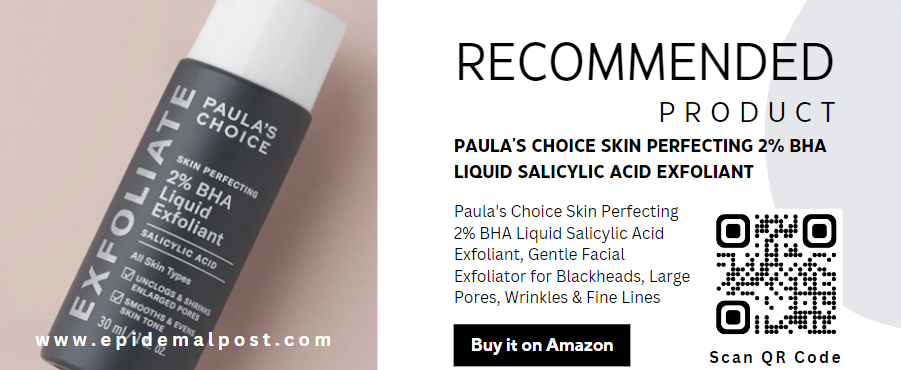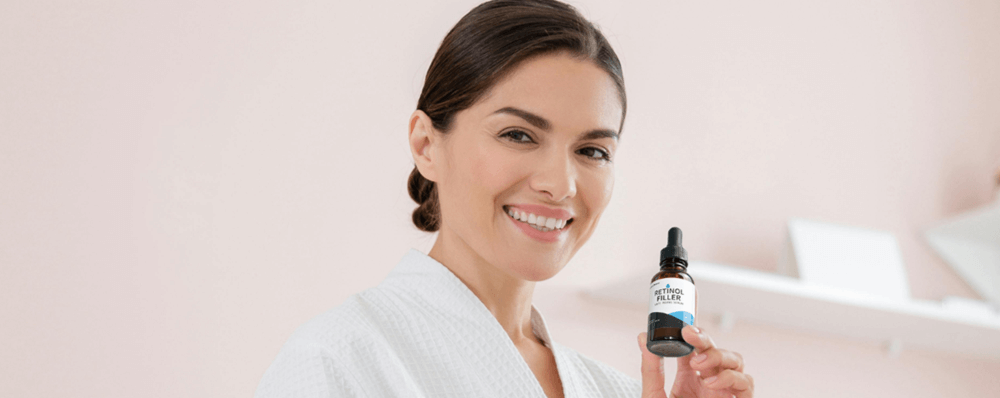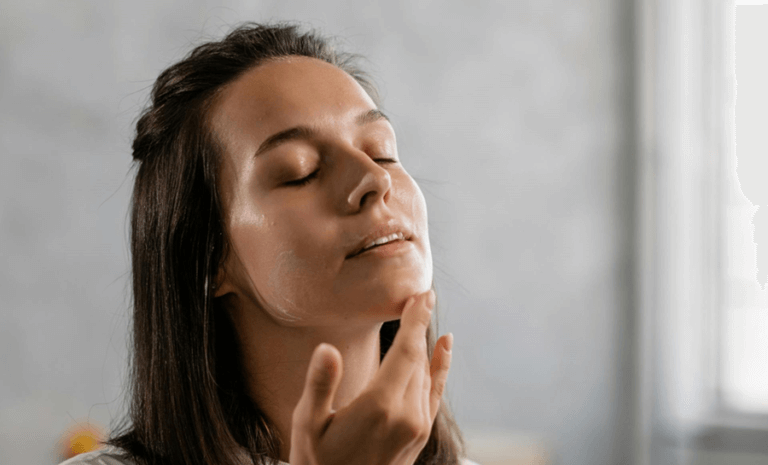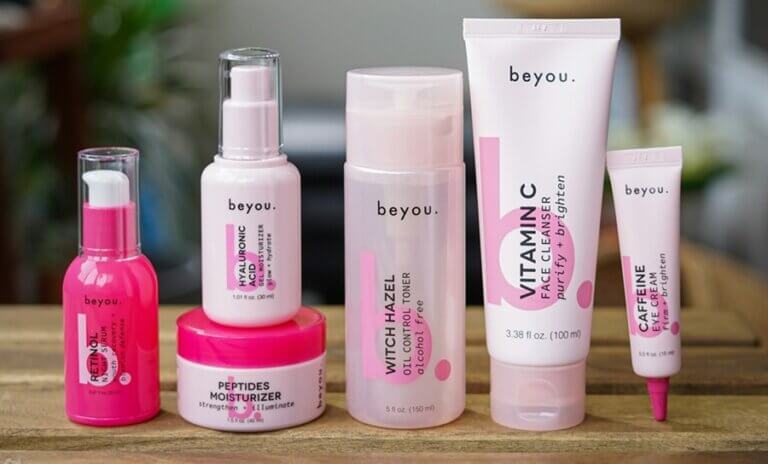This post contains affiliate links. As an Amazon Associate, we earn from qualifying purchases. View our full disclosure here.
Achieving glowing, healthy looking skin may seem daunting with the multitude of skincare products and advice out there. But having a simple, consistent routine with the right techniques can visibly transform your complexion.
In this article, we’ve compiled 15 skincare tips from top skin experts to help you get gorgeous skin, from understanding your skin type to layering products effectively. Read on for easy to follow guidance on crafting a regimen for a clearer, more radiant complexion.
1. Double Cleanse for Clear, Balanced Skin
Struggling with clogged pores or breakouts? It is recommended to double cleansing using an oil-based cleanser first to dissolve makeup, SPF, and impurities, followed by a gentle foaming cleanser to wash residue away. Double cleansing is a two-step process that can help you achieve a clean, balanced complexion. Here’s what you need to know:
Benefits: Removes all traces of makeup, sunscreen, and dirt, preventing clogged pores and breakouts. Allows other skincare products to penetrate deeper and work more effectively. Brightens dull skin and promotes cell turnover.

Oil Cleanse (First Cleanser): Massage gently to break down makeup, sunscreen, and surface oils. Wet your hands and emulsify the cleanser with water, massaging again. Rinse thoroughly with lukewarm water.
Water Cleanse (Second Cleanser): Use a water-based cleanser suited to your skin type (gel, cream, or foaming). Massage the cleanser into damp skin, focusing on areas prone to congestion. Rinse thoroughly with lukewarm water and pat your face dry.
Choose cleansers based on your skin type:
- Oily/Acne-prone: Look for lightweight, oil-free cleansers in the second step.
- Dry/Sensitive: Opt for gentle, hydrating cleansers in both steps.
- Combination: Use an oil cleanser first and a balancing cleanser second.
2. Protect Skin Daily with Broad Spectrum Sunscreen
Daily sunscreen application is non-negotiable according to dermatologists. It’s the number one anti-aging skincare step. Using a broad spectrum sunscreen with SPF 30 or higher on your face and exposed areas year-round. Reapply every 2 hours if outdoors. Seeking shade when possible and wearing hats, sunglasses, and protective clothing also helps shield skin from sun damage that causes premature wrinkles, dark spots, and skin cancer.

Look for sunscreen labeled “broad spectrum” to ensure protection against both UVA and UVB rays. Water resistance is also key so your sunscreen doesn’t sweat off during outdoor activities. Make sunscreen part of your morning routine by keeping it visible on your bathroom counter.
3. Exfoliate Regularly for Fresher Skin
Exfoliation is a key step in achieving a radiant, healthy complexion. Here are the benefits of exfoliation and how to incorporate it into your routine for fresher skin:
Removes dead skin cells: This prevents dullness, clogged pores, and uneven texture.
Boosts cell turnover: Fresh, healthy cells reach the surface, promoting a brighter appearance.
Enhances product absorption: Other skincare products penetrate deeper for better results.
Stimulates collagen production: This helps maintain skin elasticity and reduce the appearance of fine lines.
There are two main types of exfoliation: Mechanical – Uses physical exfoliants like scrubs with beads or grains to buff away dead skin. Chemical: Uses AHAs (alpha hydroxy acids) or BHAs (beta hydroxy acids) that gently dissolve the bonds between dead skin cells.
How Often to Exfoliate:
- Normal/Combination Skin: 2-3 times a week.
- Oily Skin: Up to 3 times a week.
- Dry/Sensitive Skin: 1-2 times a week (be gentle and choose chemical exfoliation).
Be gentle: Don’t scrub harshly, as this can irritate the skin.
Choose the right exfoliant for your skin type: Consider sensitivity and desired results.
Patch test first: Apply a small amount of product on your inner arm and wait 24 hours to check for irritation.
Exfoliate at night: Skin is more sensitive to sun after exfoliation.
Moisturize afterwards: Replenish hydration lost during exfoliation.

Look for exfoliating toners or masks for a gentler approach. Exfoliate lips regularly with a soft washcloth or lip scrub. If you have concerns or sensitive skin, consult a dermatologist for personalized advice. By following these tips, you can incorporate exfoliation into your routine for a fresher, more radiant complexion!
4. Hydrate Skin with Serums, Oils, and Moisturizers
Hydrated skin just looks healthier, layer hydrating products like hyaluronic acid serums, facial oils, and moisturizers both morning and night for plump, supple skin. Hyaluronic acid acts like a moisture magnet, while facial oils reinforce the skin barrier with nourishing fatty acids, antioxidants, and vitamins. Lock it all in with a moisturizer suited to your skin type. Here’s how to use serums, oils, and moisturizers to achieve optimal hydration:

Serums: Lightweight, concentrated formulas packed with beneficial ingredients like hyaluronic acid (intense hydration) and vitamin C (brightening). Apply a thin layer after cleansing and toning (optional) for a targeted boost.
Facial Oils: Rich in nutrients and fatty acids, oils lock in moisture and address specific concerns like dryness (rosehip oil) or fine lines (jojoba oil). Apply a few drops after serum on damp skin for extra nourishment.
Moisturizers: Creams or lotions that create a protective barrier, preventing moisture loss. Choose a formula based on your skin type: lighter for oily skin, richer for dry skin. Apply daily, morning and night, as the last step in your routine.
Hydration Tips:
- Know your skin type: Different skin types have different hydration needs.
- Layer wisely: Apply products from thinnest to thickest consistency (serum, oil, moisturizer) for better absorption.
- Don’t skip the neck and décolletage: These areas show signs of aging too, so extend your skincare routine down.
- Hydrate from within: Drink plenty of water throughout the day to support skin hydration from the inside out.
- Seasonal adjustments: Opt for lighter products in summer and richer ones in winter to adapt to climate changes.
Look for products containing humectants (attract moisture) like hyaluronic acid and glycerin, and occlusives (trap moisture) like petrolatum or dimethicone for a complete hydration strategy.
5. Treat Acne and Blemishes Properly
Acne and blemishes can be frustrating, but with the right approach, you can effectively manage them and achieve clearer skin. Acne comes in various forms, from mild whiteheads to deeper cysts. Understanding the type you have helps determine the best treatment approach. Mild acne might respond well to over-the-counter (OTC) solutions, while moderate to severe cases might require a dermatologist’s guidance and prescription medication.

OTC Treatments:
- Benzoyl Peroxide: Kills bacteria and helps dry out pimples.
- Salicylic Acid: Exfoliates dead skin cells and unclogs pores.
- Alpha Hydroxy Acids (AHAs): Promote cell turnover and reduce inflammation.
Lifestyle Practices:
- Cleanse Regularly: Wash your face twice daily with a gentle cleanser to remove oil and dirt.
- Don’t Pick: Picking at blemishes can worsen inflammation and scarring.
- Reduce Stress: Stress can exacerbate breakouts. Practice relaxation techniques like yoga or meditation.
- Diet: While there’s no one-size-fits-all acne diet, some people find limiting sugary and processed foods helps.
When to See a Dermatologist:
- If OTC treatments haven’t shown improvement after 6-8 weeks.
- If you experience severe acne with deep cysts or nodules.
- If you have persistent scarring.
- If you have hormonal acne that doesn’t respond to topical treatments.
Also read: How to Remove Acne Scars and Dark Spots Caused by Pimples
Additional Tips:
- Moisturize: Even oily skin needs hydration. Choose a non-comedogenic moisturizer that won’t clog pores.
- Sunscreen: Sun exposure can worsen acne. Use a non-comedogenic, oil-free sunscreen daily.
- Spot Treatments: Apply a targeted treatment containing benzoyl peroxide or salicylic acid directly on blemishes.
- Be Patient: Clearing acne takes time and consistency with your chosen treatment plan.
Remember, a dermatologist can provide a personalized diagnosis and treatment plan based on your specific needs. Don’t hesitate to seek professional guidance for stubborn acne or concerns about scarring.
6. Fade Dark Spots and Uneven Skin Tone
Dark spots and uneven skin tone are common concerns. Understanding the Cause – Sun Damage: This is a major culprit. Unprotected sun exposure stimulates melanin production, leading to hyperpigmentation (dark spots). Post-inflammatory Hyperpigmentation (PIH): Inflammation from acne, eczema, or injuries can leave dark spots as they heal. Hormonal Changes: Pregnancy, birth control pills, and other hormonal fluctuations can trigger uneven pigmentation.

Sun Protection is Key: Daily sunscreen with SPF 30 or higher is crucial. Look for broad-spectrum protection to shield against UVA and UVB rays. Reapply sunscreen every two hours, especially with sweat or water exposure. Consider sun-protective clothing like hats and long sleeves for added defense.
Exfoliation Matters: Regular exfoliation removes dead skin cells that can contribute to a dull appearance and block the penetration of lightening treatments. Choose gentle chemical exfoliants with AHAs (glycolic, lactic acid) or BHAs (salicylic acid) 2-3 times a week based on your skin type. Be cautious with mechanical scrubs, especially on sensitive skin, as they can irritate.
Lightening Ingredients: Several topical ingredients can help fade dark spots and brighten skin tone. Look for products containing:
- Hydroquinone: A powerful lightening agent, but consult a dermatologist for guidance as it can be irritating.
- Kojic Acid: Derived from mushrooms, it helps reduce melanin production.
- Vitamin C: An antioxidant that brightens and evens skin tone.
- Azelaic Acid: Reduces inflammation and has mild lightening properties.
Professional Treatments: For stubborn dark spots or unevenness, consider consulting a dermatologist. They may recommend treatments like:
- Chemical peels: Stronger exfoliation to remove deeper layers of pigmented skin.
- Laser therapy: Targets specific areas with concentrated light to break down pigmentation.
- Microneedling: Creates tiny needles punctures that stimulate collagen production and improve skin tone.
Maintain a healthy lifestyle: Eat a balanced diet, drink plenty of water, and manage stress to promote overall skin health. Be gentle with your skin: Avoid harsh scrubbing, hot showers, and picking at blemishes. Consult a dermatologist before starting any new skincare regimen, especially if you have sensitive skin or underlying conditions.
By combining these strategies and maintaining consistency, you can gradually fade dark spots and achieve a more even, radiant complexion. Remember, prevention is key – sun protection is your best defense against future hyperpigmentation.
7. Stimulate Collagen with Retinoids and Copper Peptides
Collagen is a vital protein that provides structure and elasticity to your skin. As we age, collagen production naturally declines, leading to wrinkles, fine lines, and loss of firmness. Here’s how retinoids and copper peptides can help you fight back:

The Collagen Boosters:
- Retinoids: Derived from vitamin A, retinoids are some of the most well-researched and effective ingredients for stimulating collagen production. They work by increasing cell turnover and signaling the skin to produce more collagen. Popular retinoids include retinol, retinaldehyde, and tretinoin (prescription).
- Copper Peptides: These short chains of amino acids with copper act as messengers in the skin. They signal to the fibroblasts (collagen-producing cells) to increase collagen synthesis. Some popular copper peptides include GHK-Cu and tripeptide-1.
Using Them Together:
- Potential Benefits: Both retinoids and copper peptides can work synergistically to boost collagen production, potentially leading to smoother, firmer skin and reduced wrinkles.
- Cautious Approach: Both ingredients can increase skin cell turnover and sensitivity. It’s important to be cautious when using them together to avoid irritation.
Here are some tips for incorporating retinoids and copper peptides into your routine:
- Start Slow: Begin with a low concentration of retinoid a few times a week and gradually increase frequency as your skin tolerates it. Introduce copper peptides a few nights a week on nights you don’t use retinoid.
- Apply at Night: Both retinoids and copper peptides can make your skin more sensitive to sun, so nighttime application is recommended.
- Moisturize: Using a gentle moisturizer is crucial, as retinoids and copper peptides can cause dryness.
- Sunscreen is Essential: Daily sunscreen with SPF 30 or higher is non-negotiable, as increased sun sensitivity is a side effect of both ingredients.
Additional Tips:
- Consult a Dermatologist: If you have sensitive skin or any concerns, consult a dermatologist for personalized advice on incorporating these ingredients into your routine.
- Consider Alternatives: If retinoids are too harsh for your skin, explore other collagen-boosting ingredients like vitamin C or bakuchiol (considered a gentler alternative to retinol).
- Be Patient: It takes time to see results with any skincare routine. Consistency is key for maximizing the benefits of retinoids and copper peptides.
By incorporating these tips and understanding the potential of retinoids and copper peptides, you can take steps to stimulate collagen production and promote a more youthful, radiant complexion. Remember, a consistent skincare routine with the right ingredients can make a significant difference in your skin’s appearance.
8. Eat a Skin-Healthy Diet Rich in Antioxidants
Eating a well-balanced diet rich in antioxidants is a fantastic way to support healthy skin from the inside out. Here are some tips:

Antioxidant Powerhouse Foods:
- Colorful Fruits and Vegetables: Aim for a rainbow on your plate! Fruits and vegetables are loaded with antioxidants like vitamins A, C, and E, which fight free radical damage that can contribute to wrinkles and premature aging.
- Berries: Blueberries, strawberries, raspberries, and cranberries are superstars when it comes to antioxidants.
- Fatty Fish: Salmon, tuna, and sardines are rich in omega-3 fatty acids, which can reduce inflammation and promote skin health.
- Nuts and Seeds: Almonds, walnuts, chia seeds, and flaxseeds are packed with antioxidants, vitamin E, and healthy fats that nourish the skin.
- Green Tea: This beverage boasts powerful antioxidants that can protect against sun damage and improve skin elasticity.
Dietary Tips for Healthy Skin:
- Hydration is Key: Drinking plenty of water throughout the day keeps your skin plump and hydrated, promoting a healthy glow.
- Limit Processed Foods: Processed foods are often high in sugar, unhealthy fats, and sodium, which can contribute to inflammation and breakouts.
- Healthy Fats: Include healthy fats like those found in avocados and olive oil in your diet. These fats are essential for maintaining skin cell health and moisture.
- Consider Supplements: Consult a doctor before starting any supplements, but some, like vitamin C and omega-3 fatty acids, may benefit skin health when incorporated into a balanced diet.
A balanced approach is key. Include a variety of antioxidant-rich foods from all food groups. While diet plays a significant role, it’s one piece of the puzzle. Combine a healthy diet with a good skincare routine and sun protection. By nourishing your body with the right nutrients, you can contribute to healthy, radiant skin that glows from within.
9. Manage Stress to Avoid Inflammation and Breakouts
Stress can wreak havoc on your skin, leading to inflammation, breakouts, and a dull complexion. When stressed, your body releases cortisol, a hormone that can increase oil production and inflammation in the skin. This can lead to breakouts and worsen existing skin conditions like eczema or psoriasis. Stress can also weaken your skin’s barrier function, making it more susceptible to irritation and environmental damage.

Stress Management Techniques:
- Find Your Relaxation Routine: Explore activities that help you unwind and de-stress. This could be yoga, meditation, deep breathing exercises, spending time in nature, listening to calming music, or reading a book.
- Prioritize Sleep: Aim for 7-8 hours of quality sleep each night. When you’re well-rested, your body is better equipped to handle stress and keep your skin healthy.
- Exercise Regularly: Physical activity is a great stress reliever and promotes overall well-being, including skin health. Aim for at least 30 minutes of moderate-intensity exercise most days of the week.
- Healthy Habits: Maintain a balanced diet, stay hydrated, and limit alcohol and caffeine. These lifestyle practices contribute to stress management and overall health, benefiting your skin.
- Connect with Others: Social support is crucial for managing stress. Spend time with loved ones, confide in friends or family, or consider joining a support group.
Gentle Routine: When stressed, your skin might be more sensitive. Opt for a gentle cleanser and moisturizer suitable for your skin type. Avoid harsh scrubs or drying products. Soothing Ingredients: Look for skincare products containing calming ingredients like aloe vera, chamomile, or centella asiatica (CICA) to soothe irritation and reduce inflammation. Don’t Pick: Picking at blemishes can worsen inflammation and scarring. Resist the urge and manage breakouts with spot treatments or consult a dermatologist for stubborn acne.
10. Avoid Harsh Scrubbing and Over-Exfoliating
Harsh scrubbing and over-exfoliating can be detrimental to your skin’s health. Why Avoid Harsh Scrubbing and Over-Exfoliation? Your skin has a natural protective barrier that keeps moisture in and irritants out. Harsh scrubbing and over-exfoliation can damage this barrier, leaving your skin vulnerable to dryness, irritation, and even infection.

Over-exfoliated skin is more prone to inflammation and breakouts. Excessive exfoliation can lead to uneven patches of redness or even hyperpigmentation.
When cleansing, use gentle circular motions with your fingertips. Avoid scrubbing or using a washcloth that’s too rough. Choose a gentle exfoliant based on your skin type:
- Normal/Combination: Exfoliate 2-3 times a week with a chemical exfoliant (AHAs or BHAs) or a very gentle physical scrub.
- Oily: Exfoliate up to 3 times a week, but be mindful of irritation.
- Dry/Sensitive: Exfoliate 1-2 times a week with a very gentle chemical exfoliant or a soft washcloth.
If your skin feels red, tight, or itchy after cleansing or exfoliating, you’re likely overdoing it. Reduce the frequency or switch to a gentler method. Avoid exfoliating on irritated skin, sunburns, or open wounds. Let your skin heal completely before resuming exfoliation.
Alternatives to Harsh Scrubs:
- Chemical Exfoliants: AHAs (glycolic, lactic acid) and BHAs (salicylic acid) offer gentle yet effective exfoliation. Choose the right type for your skin concern.
- Exfoliating Toners: These offer a mild exfoliation option for daily use or in between scrubs. Look for formulas with AHAs or BHAs.
- Exfoliating Masks: Weekly clay masks can help remove dead skin cells without harsh scrubbing.
11. Apply Skincare Products in Order of Texture
To maximize absorption, skincare products should be “layered from lightest to richest consistency.” Apply watery serums and toners first. Follow with creams and oils to seal moisture in.
Wait 1-2 minutes between steps to allow products to fully absorb. Resist the urge to pile on too many products at once. Pat gently instead of dragging delicate facial skin when layering products.
12. Adapt Your Skincare Routine Based on Skin Needs
As seasons and skin needs change, adjust your products and ingredients accordingly. In summer, swap thick creams for lighter gels. In winter, use more hydrating and antioxidant-rich formulas.
If acne-prone, use oil-controlling and blemish-fighting ingredients like salicylic acid and niacinamide. If concerned about aging, focus on brightening, collagen-production, and skin renewal. Tailor your routine to target your skin’s unique requirements.
13. Sleep on a Silk Pillowcase to Avoid Sleep Lines
Harsh cotton pillowcases can tug on facial skin leading to sleep lines around the mouth and eyes. Instead, choose smooth silk or satin pillowcases.
The slippery fabric allows skin to glide over the surface rather than catching, which minimizes wrinkling and compression lines. Also be sure to wash pillowcases frequently for hygienic skin.
Also read: The Ultimate Nighttime Skincare Routine for Glowing Skin
14. Cleanse, Tone, and Moisturize Your Neck
Don’t just stop at your chin! It’s crucial to extend your skincare routine down to the neck and chest. The delicate neck skin shows signs of aging too but often gets ignored.
Gently cleanse, tone, and moisturize the neck and décolleté areas as well, using light upward strokes. Addressing neck skin now helps minimize wrinkling and sun damage for a more unified, youthful look.
Also read: The Ultimate Morning Skincare Routine for Glowing Skin
15. See a Dermatologist Annually for Screenings
Scheduling regular appointments with a dermatologist is crucial for maintaining healthy skin and detecting potential problems early on. Yearly mole checks and skin cancer screenings help detect problems early.

Skin cancer is the most common cancer in the United States. A dermatologist can perform a thorough skin exam to identify suspicious moles or lesions and recommend appropriate treatment if necessary. Early detection is key for successful treatment of skin cancer.
Whether you have acne, eczema, rosacea, or other skin conditions, a dermatologist can diagnose the issue and develop a personalized treatment plan. They have the expertise and access to advanced treatments to effectively manage various skin conditions.
A dermatologist can assess your skin type and risk factors for sun damage or other skin problems. They can then provide personalized advice on sun protection, appropriate skincare routines, and early detection strategies.
What to Expect During a Skin Screening:
- Detailed Examination: The dermatologist will examine your entire skin surface, including your scalp, ears, behind the knees, and between your toes. They may use a special magnifying tool to get a closer look at any moles or lesions.
- Discussion of Concerns: Be open about any skin concerns you have, including new moles, changes in existing moles, unusual bumps, persistent itching, or any other changes you’ve noticed.
- Treatment Recommendations: If the dermatologist finds anything suspicious, they will recommend next steps, which may include a biopsy, further testing, or a treatment plan.
Who Should See a Dermatologist Annually?
- Everyone: Regardless of age or skin type, annual skin screenings are recommended for everyone. Early detection is crucial for successful treatment of any skin cancer.
- High-Risk Individuals: People with a personal or family history of skin cancer, eczema, fair skin, a history of significant sun exposure, or a weakened immune system should be especially vigilant and consider more frequent screenings (every 6 months) depending on their individual risk factors.
Conclusion
Achieving healthy, glowing skin is about more than just using the right products. Consistency and a holistic approach are key. By following these 15 tips, you can establish a personalized skincare routine that addresses your unique needs. Remember, it takes time to see results, so be patient and consistent with your new regimen. Don’t hesitate to consult a dermatologist for professional guidance and to address any specific concerns you may have. With dedication and the right practices, you can achieve your healthiest, most radiant skin yet.





